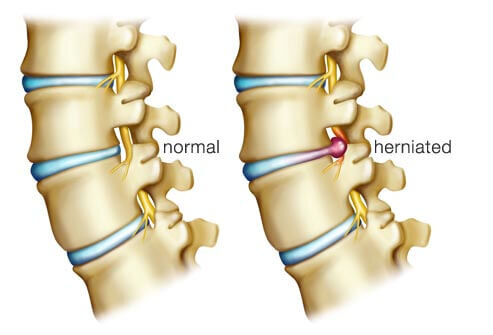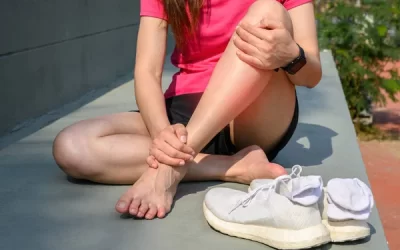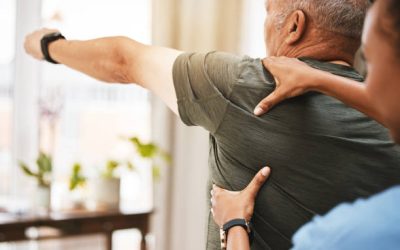Your spine is an amazing engineering marvel. Multiple bones are stacked together linked by connecting joints and cushioned by small spongy disc tissue between the bones. Multiple muscles connect to the spine. Together, all of this design provides strength, control and movement to our bodies and stabilizing control to our core enabling our limbs to move efficiently. When vertebral discs are healthy, they function as tiny shock absorbers for the spine and keep it healthy and movement pain free. However, if there is damage to a disc such as can occur if the thick outer lining of the disc tissue becomes compromised, the disc can become bulged out – known as “bulging disc. Or it can open and leak into the spinal space. This condition is referred to as “slipped disc” or “ruptured disc”.

What causes such a condition? Direct injury or trauma to the spine (fall, auto accident), general wear and tear of a disc due to mechanical faults such as poor postural habits or an aging spine can be prone to discs “drying out” and losing elasticity which makes the spine and movement in general less flexible or pliable to react to movement. When a disc is not holding its shape or original place, it can begin to press on other tissues around it such as a nerve root in that area or even the spinal cord itself.
Symptoms of herniated disc include pain, numbness and weakness in areas of the body involved by the segmented nerve root that is involved, backache, radiating pain into an arm or leg , loss of bowel or bladder control. If the herniated portion is not pressing on a nerve root, you may not have pain at all. If you suspect that you may have a herniated disc, and in all cases where your bowel or bladder function is affected, it is important to be evaluated by a physician who will examine you and conduct tests to confirm. The physician will likely send you to physical therapy. Not all herniated discs require surgery and the more conservative treatment by physical therapy is often preferred option one.
A physical therapist will evaluate your spine, movement, muscle strength and muscle flexibility, posture and postural habits based on work/home and recreation, nerve function and pain symptoms. A targeted individualized program specific to your findings will be developed to put your body back into proper balance and function. Only a licensed physical therapist can develop this specialized plan for you and they should explain the process, exercises and interventions needed. You should feel like your are learning about your body, your condition and what exactly you can do to relieve symptoms. Good physical therapy empowers patients to help themselves and to avoid the problem in the future. You may need instruction in proper ergonomic seated desk set up, body mechanics for lifting and carrying tasks, sleeping positions and proper exercise form/technique for things you enjoy doing or even how to lift/care for young children when you have a back condition.

To reduce pain and muscle spasm or to prepare muscles for stretch, modalities such as heat/cold therapy, gentle electric stimulation and/or ultrasound are helpful to relieve spasm, release endorphins, increase oxygen and nutrients to healing tissues and reduce inflammation. Active intervention may include manual techniques by your therapist to mobilize spinal segments, stretching to improve flexibility in tight muscles, exercises to improve muscle strength and balance of muscle groups that attach to spine, deep core muscle strengthening. Gentle traction techniques to help get pressure off nerve roots may be needed. Each person’s condition is evaluated individually and treatment may or may not require all of the above. Occasionally, there is more than one spinal disc involved. Sometimes other spinal issues are also active and contributing to a patient’s symptoms such as an aging spine with arthritic changes in the spinal joint regions or a systemic disease process that now has a mechanical disc issue added to it. Physical therapists will account for all contributing factors that may be affecting you and create an intervention that is right for you specifically.

Physical therapy at its center philosophy is to restore normal biomechanics, reduce pain and to educate so that once the condition is resolved, it will not return. It is good to know that physical therapy is often a very successful, noninvasive option to help with this condition. It is definitely something that can be helped and can improve in a short matter of time. The therapists at Optimal Physical Therapy and Sports Performance have many years of experience evaluating and helping patients with this condition.



